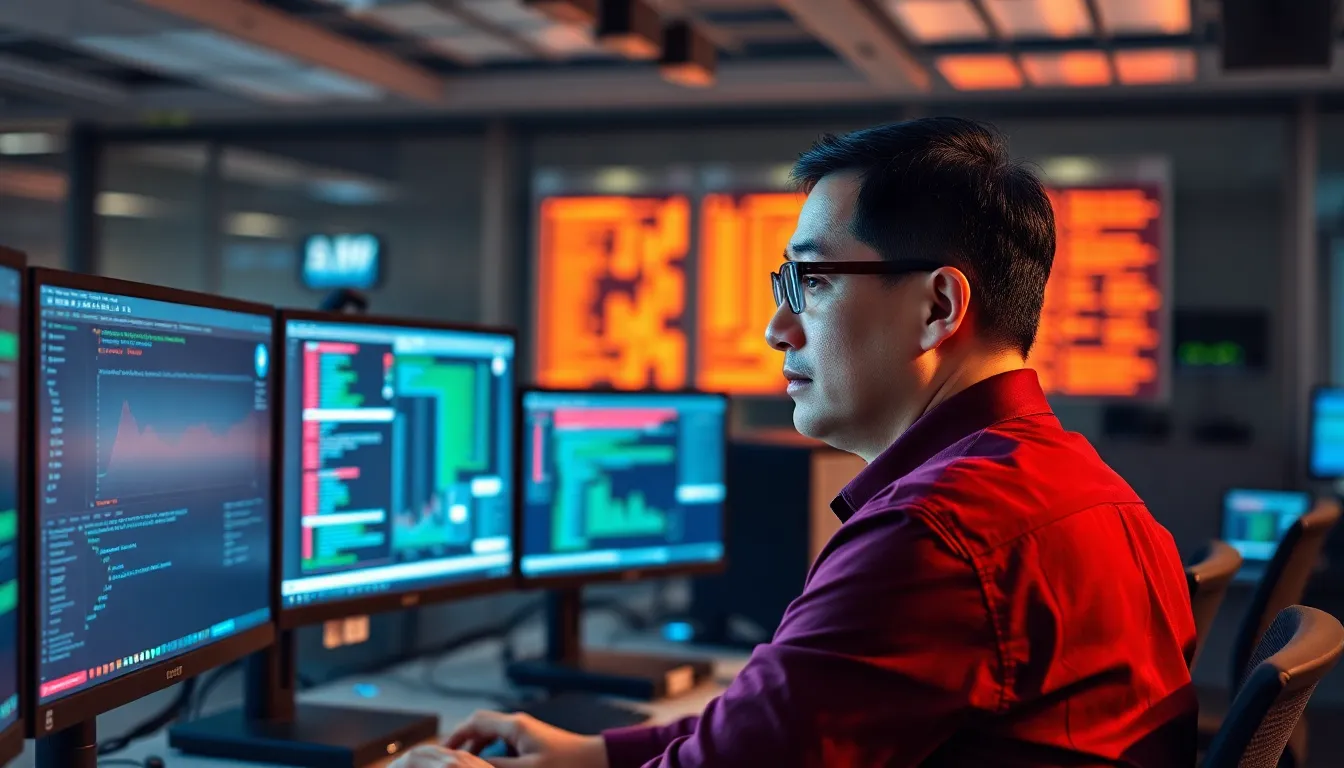In a world where every click could lead to chaos, cybersecurity insiders are the unsung heroes battling digital villains. These tech-savvy warriors don’t wear capes but wield firewalls and encryption like pros. While most people are busy scrolling through cat memes, insiders are on the front lines, preventing data breaches that could make even the toughest CEO break a sweat.
Table of Contents
ToggleUnderstanding Cybersecurity Insiders
Cybersecurity insiders play a vital role in defending organizations against digital threats. These professionals leverage their expertise to safeguard sensitive information and promote a secure online environment.
Definition of Cybersecurity Insiders
Cybersecurity insiders refer to individuals within an organization who possess knowledge about the company’s security measures and assets. These insiders include IT professionals, security analysts, and compliance officers who understand the specific risks faced by their organizations. By actively monitoring systems and implementing security protocols, they help detect, prevent, and respond to potential breaches and threats.
Types of Cybersecurity Insiders
- Security Analysts: They analyze security incidents, identify vulnerabilities, and develop strategies to mitigate risks.
- Network Administrators: They manage and maintain network infrastructure, ensuring it remains secure and efficient.
- Incident Responders: They handle security incidents, conducting investigations and coordinating responses to breaches.
- Compliance Officers: They ensure organizations adhere to regulatory requirements and implement security measures aligned with industry standards.
- Ethical Hackers: They simulate attacks to identify weaknesses in a system, providing insights to strengthen defenses.
The Role of Cybersecurity Insiders

Cybersecurity insiders play a vital role in safeguarding organizational assets against digital threats. They utilize their expertise and specialized tools to mitigate risks effectively.
Importance in Organizational Security
Cybersecurity insiders enhance security by proactively monitoring network environments. They identify vulnerabilities through regular assessments and implement fortified security measures. Insiders educate employees about security best practices, fostering a culture of awareness across the organization. The presence of skilled insiders significantly reduces the likelihood of data breaches and strengthens overall defense mechanisms.
Consequences of Insider Threats
Insider threats can lead to severe repercussions for organizations, including data loss, financial damage, and reputational harm. Malicious insiders can intentionally exploit vulnerabilities to steal sensitive information, while negligent insiders may inadvertently expose data through careless actions. The impacts of these threats often result in legal issues, regulatory fines, and operational disruptions, underscoring the importance of cultivating trust and vigilance within personnel.
Strategies to Mitigate Insider Risks
Mitigating insider risks is essential for enhancing organizational cybersecurity. Implementing proactive measures can significantly minimize threats from both malicious and negligent insiders.
Implementing Access Controls
Implementing access controls restricts data access to authorized personnel only. Establish role-based access control (RBAC) to define permissions based on job responsibilities. Regularly review and update these permissions to align with changing roles. Utilize tools like Multi-Factor Authentication (MFA) to add an additional layer of security. Monitor access logs to identify suspicious activities, as behavioral analytics can highlight anomalies. Immediate access revocation upon termination or role change is crucial for maintaining security integrity.
Employee Training and Awareness
Employee training and awareness create a strong foundation for cybersecurity resilience. Conduct regular training sessions focused on recognizing phishing attempts, password management, and incident reporting. Employ simulations, such as phishing tests, to gauge understanding and improve responses. Provide clear protocols for reporting unusual activities and reinforce the importance of a vigilant workplace culture. Continuous education fosters awareness, making employees the first line of defense against insider threats.
Detecting Insider Threats
Detecting insider threats requires robust systems and methods that identify suspicious activities and behaviors. Cybersecurity insiders utilize various tools and techniques to monitor, analyze, and safeguard organizational data.
Monitoring and Detection Tools
Effective monitoring tools play a crucial role in identifying potential insider threats. Systems like Security Information and Event Management (SIEM) aggregate log data for analysis, enabling real-time detection of anomalies. Data Loss Prevention (DLP) solutions restrict unauthorized data transfers, while User Behavior Analytics (UBA) monitors user actions for deviations from established patterns. Regularly updated intrusion detection systems (IDS) can alert cybersecurity teams to unusual access attempts, promoting prompt investigations.
Behavioral Analysis Techniques
Behavioral analysis techniques involve evaluating user actions to identify potential risks. Baseline behavior profiles establish normal operating conditions for employees, allowing anomalies to stand out. Machine learning algorithms analyze deviations in login times, data access frequency, and file transfers. Incorporating these techniques helps organizations detect potential insider threats early, facilitating timely responses before significant damage occurs. Regular assessments and updates to behavioral models ensure continued effectiveness against evolving threats.
Cybersecurity insiders are vital to safeguarding organizations from digital threats. Their expertise and proactive measures not only protect sensitive data but also foster a culture of security awareness among employees. By implementing robust access controls and conducting regular training, companies can significantly reduce the risks posed by both malicious and negligent insiders.
Investing in the right monitoring tools enhances the ability to detect suspicious activities, ensuring timely responses to potential threats. As the digital landscape continues to evolve, the role of cybersecurity insiders will remain crucial in maintaining a secure environment. Embracing their contributions is essential for any organization aiming to thrive in today’s interconnected world.




